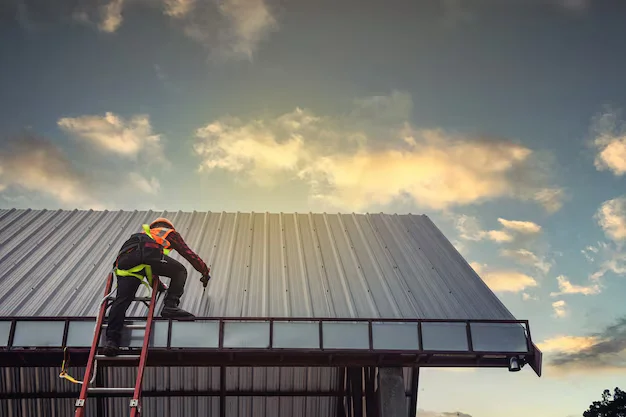Most homeowners and business owners don’t think about their roofs and siding until problems arise. By the time leaks appear, shingles curl, or siding begins to warp, damage may already be extensive. Instead of reacting to issues after they occur, a proactive approach through preventative maintenance programs can extend the lifespan of exterior materials, reduce long-term costs, and improve overall property protection.
Routine inspections, minor repairs, and scheduled cleanings prevent premature deterioration. Investing in a preventative maintenance program is one of the most effective ways to protect a property while avoiding unexpected expenses.
Why Preventative Maintenance Matters
Exterior surfaces are constantly exposed to harsh weather, debris, and environmental wear. Without regular maintenance, minor issues can escalate into costly repairs.
✔ Prevents Early Roof and Siding Deterioration – Small cracks, loose shingles, or damaged panels worsen over time if left unaddressed.
✔ Reduces Repair Costs – Identifying and fixing problems early saves money compared to emergency replacements.
✔ Protects Against Water Damage – Properly maintained exteriors prevent leaks, mold growth, and interior structural damage.
✔ Enhances Energy Efficiency – Well-maintained roofing and siding improve insulation, reducing heating and cooling costs.
Taking a proactive approach ensures long-term durability and performance.
Components of an Effective Preventative Maintenance Plan
A successful maintenance program includes scheduled inspections, cleaning, and timely repairs to keep exterior surfaces in optimal condition.
1. Roof Inspections and Minor Repairs
✔ Inspecting shingles, flashing, and sealants helps detect damage before it worsens.
✔ Addressing small leaks or missing shingles prevents widespread moisture intrusion.
✔ Checking for sagging, pooling water, or clogged gutters ensures proper drainage.
2. Siding Evaluations and Cleaning
✔ Cracks, warping, or fading siding can indicate structural concerns.
✔ Cleaning siding prevents algae, mold, and dirt buildup that cause deterioration.
✔ Sealing gaps between panels reduces heat loss and prevents pests from entering.
3. Gutter Maintenance and Water Flow Checks
✔ Clogged gutters contribute to foundation erosion and roof damage.
✔ Seasonal gutter cleanings remove leaves, dirt, and obstructions.
✔ Ensuring proper water flow prevents ice dams and water pooling near the property.
The Impact of Seasonal Weather on Roof and Siding Longevity
Different seasons present unique challenges for exterior materials. A maintenance schedule that considers seasonal effects helps maximize protection.
Spring and Summer
✔ Inspect for damage caused by winter snow and ice.
✔ Clean gutters to prepare for heavy spring rainfall.
✔ Wash siding to remove pollen, dust, and mildew growth.
Fall and Winter
✔ Remove leaves and debris from roofs and gutters.
✔ Check insulation and attic ventilation to prevent ice dams.
✔ Ensure flashing and weather seals are intact before winter storms arrive.
Adjusting maintenance tasks by season keeps exterior surfaces strong year-round.
Common Roofing and Siding Issues That Can Be Prevented
With regular upkeep, many common roofing and siding problems can be avoided.
✔ Shingle Curling and Granule Loss – Proper maintenance slows down shingle wear and prevents early replacement.
✔ Moss and Algae Growth – Cleaning siding and roofs removes organic buildup that weakens materials.
✔ Loose or Missing Flashing – Addressing flashing issues prevents leaks around chimneys, vents, and edges.
✔ Warped or Cracked Siding – Timely inspections detect signs of siding failure before extensive damage occurs.
Preventative maintenance is the key to avoiding these costly problems.
How Preventative Maintenance Improves Energy Efficiency
A well-maintained exterior directly affects a building’s energy efficiency by preventing heat loss and controlling moisture.
✔ Sealed Roofing Systems – Reduces heat escaping through the attic during winter.
✔ Insulated Siding – Prevents drafts and temperature fluctuations.
✔ Proper Gutter Drainage – Stops moisture buildup that can impact insulation.
Regular upkeep ensures that a home or business remains energy-efficient throughout the year.
DIY vs. Professional Maintenance: What Works Best?
Some maintenance tasks can be handled by property owners, while others require professional expertise.
✔ DIY Tasks: Cleaning gutters, checking for visible exterior damage, and removing debris from roofs and siding.
✔ Professional Services: In-depth inspections, flashing and sealant repairs, mold removal, and structural evaluations.
Emerald Roofing and Siding provides comprehensive preventative maintenance programs, ensuring that both roofing and siding remain durable and efficient. Partnering with professionals ensures that all aspects of a building’s exterior receive expert care.
Long-Term Cost Savings with a Maintenance Plan
Many homeowners and business owners hesitate to invest in routine maintenance, but it ultimately reduces expenses in the long run.
✔ Prevents Early Replacements – A well-maintained roof or siding lasts longer, delaying costly replacements.
✔ Avoids Emergency Repairs – Proactive care eliminates the need for last-minute, high-cost fixes.
✔ Maintains Property Value – A well-kept exterior enhances curb appeal and resale potential.
A maintenance program is a cost-effective way to extend the life of a building’s exterior and reduce unexpected expenses.
Conclusion
Preventative maintenance is the best approach for protecting roofing and siding from premature damage. By scheduling regular inspections, cleaning exterior surfaces, and addressing small repairs promptly, property owners can avoid major issues and ensure their home or business remains structurally sound.
Investing in routine upkeep today prevents costly repairs tomorrow. Whether handling simple tasks independently or working with professionals, a proactive maintenance plan is essential for long-term durability and efficiency of Preventative maintenance programs.







